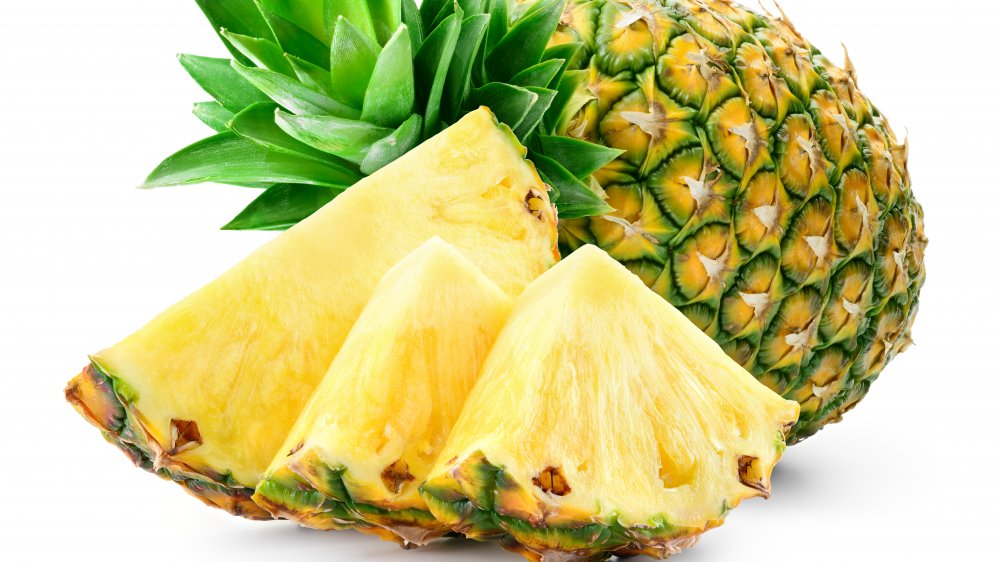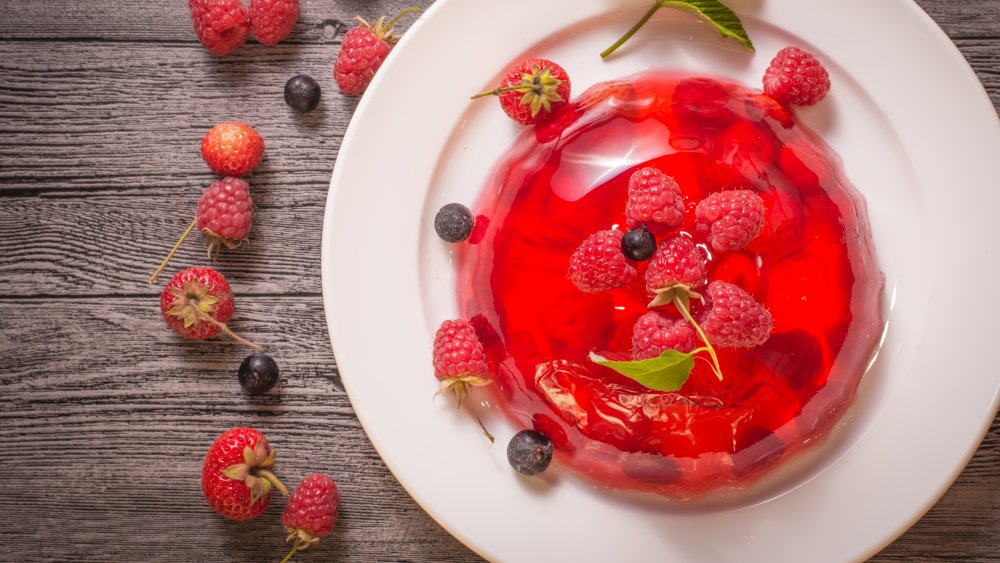You Shouldn't Put Fresh Pineapple In Jell-O. Here's Why
Jell-O really has one of the best histories of any food product. Pearl Waite from LeRoy, New York was not finding success as a cough syrup manufacturer in 1895. So Waite abandoned his cough syrup business and with the help of his wife, May, he experimented with gelatin and some fruit syrups and came up with a granulated powder gelatin that was 88 percent sugar. His wife called the dessert Jell-O, but, unfortunately, the Waites didn't have a lot of marketing know-how or capital to get the product to gel with consumers. So, Waite sold the name and the business for a modest $450 to his neighbor Orator Francis Woodward (via What's Cooking America).
As the story goes, Woodward initially had a bit of trouble marketing it himself, but took to distributing recipe booklets in 1904 that included one that utilized the Jell-O mold. Molds really took off in the 1940s and 1950s, with the brand once again distributing booklets that helped women decide which fruits worked best in the gelatin dessert. Today, fresh blueberries, strawberries, apples, and bananas remain popular fruits for Jell-O desserts (via The Washington Post). The jiggly dessert comes in a variety of fruit flavors, and clocking in at just 70 calories per serving, it's a treat that will satiate your sweet tooth, while helping you maintain your waistline (via Verywell Fit). Toss in some fruit, and it's downright healthy. But did you know you shouldn't use fresh pineapple in Jell-o?
Use canned pineapple instead
If your jam is fresh pineapple in your Jell-O, it unfortunately doesn't work. In fact, putting fresh pineapple into your Jell-O fruit dessert will pretty much ruin it. There really is no coming back. Why? Because Jell-O contains gelatin which is a protein (via Science Line). Protein is made up of amino acids. Gelatin doesn't dissolve in water, but individual amino acids do dissolve. Pineapple contains an enzyme called bromelain which prohibits your Jell-O from congealing. Fresh pineapple will just float in a mess of jewel-colored liquid if you try and add it to your Jell-O mixture.
However, pineapple lovers should not despair. There is a hack for this dilemma. Try using canned pineapple. It will combine with the Jell-O mixture and the mixture will solidify with no problem. Why does canned pineapple work? Pineapple is heated during the canning process and it's the heat that breaks down bromelain, leaving it inactive, and unable to mess with the amino acids in gelatin. So if you are making Jell-O with pineapple, don't feel badly about skipping the fresh. Canned pineapple will be equally tasty in your dessert.

